
The word agnosticism was first publicly coined in 1869 by Thomas Huxley, a British biologist and champion of the Darwinian theory of evolution. He coined it as a suitable label for his own position. Following is a list of 15 physicists who were agnostics.
John Bardeen
Two time Nobel Prize winner in physics, first for his pioneering invention of the transistor, and second for the theory of superconductivity, American physicist John Bardeen, was an agnostic by choice.
He was once taken by surprise when an interviewer asked him a question about religion. "I am not a religious person," he said, "..and so do not think about it very much." But then he went on in a rare elaboration of his personal beliefs.
John added, "Science is a field which grows continuously with ever expanding frontiers but I feel that unlike religion it's never been done to give you the ultimate purpose in life. With religion, however, one can get some answers on faith. Most scientists, I think, leave these questions of life open and perhaps unanswerable, but they do abide by a code of moral values."
John was resolutely agnostic throughout his life.
J.C. Bose
Sir Jagadish Chandra Bose was an Indian biophysicist who invented the crescograph, a device that could detect very small motions within plant tissues. With this instrument, he showed for the first time, that plants also felt joy and pain.
Bose believed agnosticism to be the real essence of science and scientific method. A man shall not say he knows or believes that which he has "no scientific grounds" for professing to know or believe. He laid the foundations of "Basu Bigyan Mandir" (Bose's temple of scientific knowledge) in Kolkata, West Bengal.
Bose had famously said, "Not mere imagination and belief, but observation and experiment are the ultimate way of gaining knowledge or reaching the goal of acquiring truth."
Marie Curie
Two time Nobel Prize winner, one in physics and the other in Chemistry, first and only woman to achieve so, Madame Curie was an agnostic, from an early age. Her father Władysław Skłodowski was an atheist while her mother Bronisława Skłodowska a devout Catholic.

Her husband (also Nobel Prize winning physicist) Pierre Curie was an atheist. Neither wanted a religious service for their marriage ceremony. She wore a dark blue outfit, instead of a bridal gown, which would be worn by her in the laboratory for years to come.
In her final years, Marie advocated actively to encourage scientific temper in the general public, "Nothing in life is to be feared, it is only to be understood. Now is the time to understand more so that we may fear less," she would say.
Edwin Hubble
American astrophysicist who played a pivotal role in establishing the fields of extragalactic astronomy and observational cosmology. Hubble's most brilliant observation was that the red shift of galaxies was directly proportional to the distance of the galaxy from earth.
He said, "We do not know why we are born into the world, but we can try to find out what sort of a world it is, at least in its physical aspects." His life was dedicated to science and the objective world of phenomena.
When a friend asked Hubble about his beliefs, he replied, "The whole thing is so much bigger than I am, and I cannot understand it, so I just trust myself to it; and forget about it." Hubble remained an agnostic until his death.
Freeman Dyson
British-American theoretical physicist, who is famous for his work in quantum electrodynamics, solid-state physics and astronomy. Dyson was raised in what he has described as a “watered-down Church of England Christianity.” But he identifies himself as an agnostic.

He once said in a speech, "Science and religion are two windows that people look through, trying to understand the big universe outside, trying to understand why we are here. The two windows give different views, but they look out at the same universe."
"Both views are one-sided, neither is complete. Both leave out essential features of the real world. And both are worthy of respect. But trouble arises when either science or religion claims universal jurisdiction, when either religious or scientific dogma claims to be infallible," he added.
Albert Einstein
Many believers refer to some of his quotes and thus try to claim the greatest scientist of the 20th century as one of their own. However, Einstein also had famously said, "I feel that the idea of a personal God is a childlike one."

He added in 1941, "I was barked at by numerous dogs who are earning their food guarding ignorance and superstition for the benefit of those who profit from it. Then there are the fanatical atheists whose intolerance is of the same kind as the intolerance of the religious fanatics and comes from the same source."
In 1949, Einstein was prompted once again to describe his religious beliefs, "I prefer an attitude of humility corresponding to the weakness of our intellectual understanding of nature and of our own being," he said, "you may call me an agnostic, but I do not share the crusading spirit of the professional atheist."
C.V. Raman
Sir Chandrashekhara Venkat Raman was influential in the growth of science in India. He was the recipient of the Nobel Prize in Physics for the discovery of the "Raman Effect" which has its use in chemistry to provide a structural fingerprint by which molecules can be identified.

Raman was born into an orthodox South Indian Brahmin family but his interests in physics kept him away from religious or spiritual activities. He avidly read Charles Bradlaugh, the English founder of the National Secular Society and Herbert Spencer, the English polymath who contributed to agnosticism.
Rosalind Franklin
She was a British biophysicist and x-ray crystallographer who made important contributions to the understanding of the fine molecular structures of DNA, RNA and Graphite. When asked about her beliefs, she replied, "Science is my religion."
Her lack of religious faith did not stem from anyone's influence, rather from her own line of thinking. She developed her skepticism as a young child. Her mother recalled that she refused to believe in the existence of God, and remarked, "Well, anyhow, how do you know He isn't She?"
She added, "I see no reason to believe that a creator of protoplasm or primeval matter, if such there be, has any reason to be interested in our insignificant race in a tiny corner of the universe." However, Rosalind did not completely abandon Jewish traditions.
Enrico Fermi
Italian physicist who is known for the development of the first nuclear reactor and for his contributions to the development of quantum theory and nuclear physics. Fermi was awarded the 1938 Nobel Prize in Physics for his work.
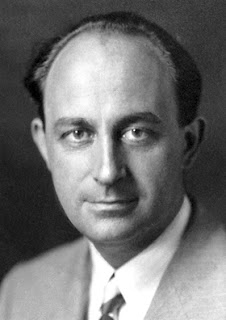
Although Enrico was baptised a Roman Catholic in accordance with his grandparents' wishes, his parents were not particularly religious. His attitude to the church eventually became one of indifference, and he remained an agnostic all his adult life.
Eugene Wigner
The Hungarian physicist was the recipient of the Nobel Prize in Physics in 1963 for his contributions to the theory of the atomic nucleus and the elementary particles, particularly through the discovery and application of fundamental symmetry principles.

Wigner's family was Jewish but not religiously observant and his Bar Mitzvah was a secular one. He told his Biographer about his religious views, "I liked a good sermon. But then religion tells people how to behave and that I could never do."
He added, "Clergymen also had to assume and advocate the presence of God, and proofs of God's existence seemed to me quite unsatisfactory. People claimed that God had made our earth. Well, how had He made it? With an earth-making machine?"
Carl Sagan
Famed American astrophysicist Carl Sagan was a renowned skeptic and agnostic who during his life refused to believe in anything unless there was physical evidence to support it.
His most well-known scientific contribution is research on extraterrestrial life, including experimental demonstration of the production of amino acids from basic chemicals by radiation. He was also known as "people's astronomer".
In reply to a question in 1996 about his religious beliefs, Sagan answered, "I'm agnostic." Sagan maintained that the idea of a creator God of the Universe was difficult to prove or disprove.
He also wrote, "Some people think God is a light-skinned male with a long beard, sitting on a throne somewhere up there in the sky, busily tallying the fall of every sparrow. Others, for example Einstein, considered God to be essentially the sum total of the physical laws which describe the universe."
Lisa Randall
She is an American theoretical physicist who works on the models of string theory in the quest to explain the structure of the universe. Her best known contribution to the field is the Randall–Sundrum model, first published in 1999. She has described herself agnostic.
In a 2006 interview, Lisa was asked whether or not she believed in God. She said, "Faith just doesn't have anything to do with what I'm doing as a scientist. It is nice if you can believe in God, because then you can see more of a purpose in many things."
"But even if you don't, though," she added, "..it doesn't mean that there's no purpose. It doesn't mean that there's no goodness. I think that there's a virtue in being good in and of itself. I think it's a problem that people are considered immoral if they're not religious. That's just not true."
Paul Dirac
He was rightfully declared the successor of Maxwell and Einstein when he worked on the reconciliation of general relativity with quantum mechanics. Dirac also predicted the existence of anti-matter for which he was given Nobel Prize in 1933.

He said in 1927, "We scientists have to be honest and must admit that religion is a jumble of false assertions with no basis in reality. The very idea of God is a product of the human imagination. Nowadays, when we understand stuff with so many natural explanations, we have no need for such solutions."
His wife Manci, (who was the younger sister of physicist Eugene Wigner), claimed, "My husband wasn't an atheist. In Italy, once, he said, "If there is a God, he has to be a great mathematician. He did say if."
Dirac explained why he was agnostic and not an atheist, "If physical laws are such that to start off life involves an excessively small chance, then there must be a god, and such a god would probably be showing his influence in the quantum jumps which are taking place later on."
"On the other hand," Dirac added, "..if life can start naturally on other planets (by chemical or biological means) and does not need any divine influence, then I will say that there is no god." Dirac remained agnostic throughout his life because the question of origin of life was not answered.
Murray Gell-Mann
He was an American physicist who received the 1969 Nobel Prize in Physics for his model of quark (an elementary particle which combines with itself to formulate heavier particles like proton and neutron).
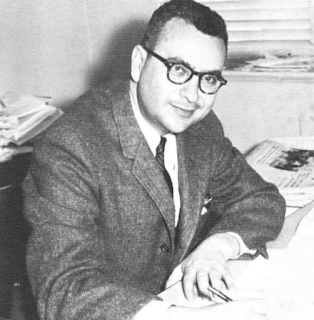
Murray called life a complex adaptive system which produces interesting phenomena, "Life can emerge from physics and chemistry, plus a lot of accidents. The human mind can arise from neurobiology, and a lot of accidents," he said.
"People keep asking me", Murray went on, "...isn't there something more beyond what you have there? Presumably they mean something "supernatural" but anyway, there isn't; you don't need something more to explain something more."
Henri Poincaré
Jules Henri Poincaré was a French physicist and mathematician who's known for his work in various fields of physics such as optics, mechanics, thermodynamics and relativity. He also contributed to the theory of algebra and geometry.

He used to say, "To doubt everything or to believe everything are two equally convenient options; but both require sincere introspection." He wrote the book, "The value of science" in 1905, in which he had declared that the hypothesis of God is incomplete and imperfect.
"But even if you don't, though," she added, "..it doesn't mean that there's no purpose. It doesn't mean that there's no goodness. I think that there's a virtue in being good in and of itself. I think it's a problem that people are considered immoral if they're not religious. That's just not true."
Paul Dirac
He was rightfully declared the successor of Maxwell and Einstein when he worked on the reconciliation of general relativity with quantum mechanics. Dirac also predicted the existence of anti-matter for which he was given Nobel Prize in 1933.

He said in 1927, "We scientists have to be honest and must admit that religion is a jumble of false assertions with no basis in reality. The very idea of God is a product of the human imagination. Nowadays, when we understand stuff with so many natural explanations, we have no need for such solutions."
His wife Manci, (who was the younger sister of physicist Eugene Wigner), claimed, "My husband wasn't an atheist. In Italy, once, he said, "If there is a God, he has to be a great mathematician. He did say if."
Dirac explained why he was agnostic and not an atheist, "If physical laws are such that to start off life involves an excessively small chance, then there must be a god, and such a god would probably be showing his influence in the quantum jumps which are taking place later on."
"On the other hand," Dirac added, "..if life can start naturally on other planets (by chemical or biological means) and does not need any divine influence, then I will say that there is no god." Dirac remained agnostic throughout his life because the question of origin of life was not answered.
Murray Gell-Mann
He was an American physicist who received the 1969 Nobel Prize in Physics for his model of quark (an elementary particle which combines with itself to formulate heavier particles like proton and neutron).

Murray called life a complex adaptive system which produces interesting phenomena, "Life can emerge from physics and chemistry, plus a lot of accidents. The human mind can arise from neurobiology, and a lot of accidents," he said.
"People keep asking me", Murray went on, "...isn't there something more beyond what you have there? Presumably they mean something "supernatural" but anyway, there isn't; you don't need something more to explain something more."
Henri Poincaré
Jules Henri Poincaré was a French physicist and mathematician who's known for his work in various fields of physics such as optics, mechanics, thermodynamics and relativity. He also contributed to the theory of algebra and geometry.

He used to say, "To doubt everything or to believe everything are two equally convenient options; but both require sincere introspection." He wrote the book, "The value of science" in 1905, in which he had declared that the hypothesis of God is incomplete and imperfect.











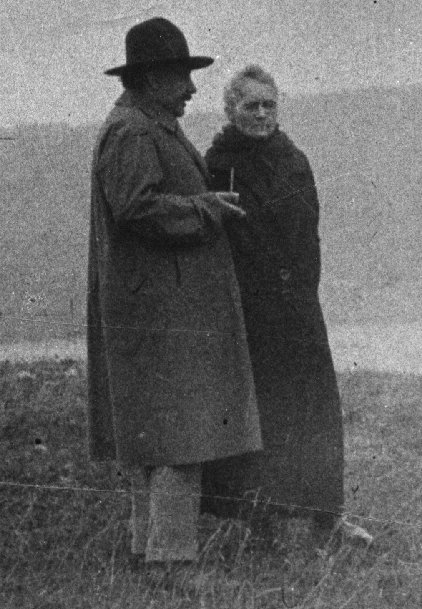









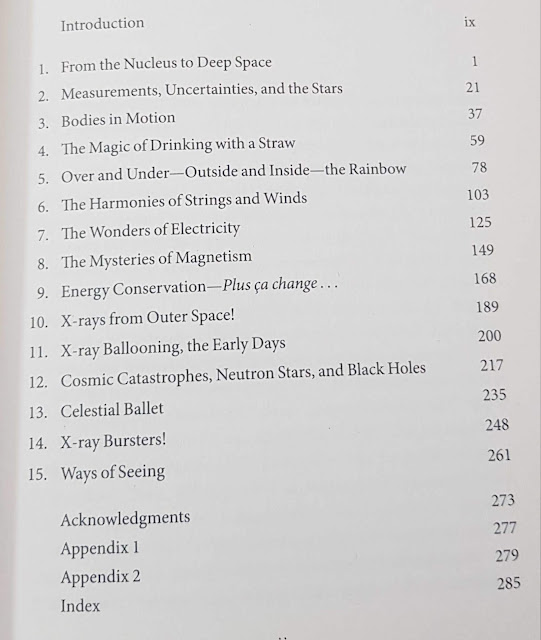










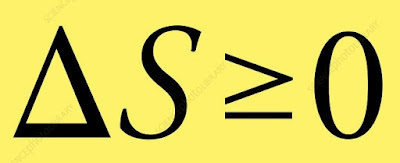
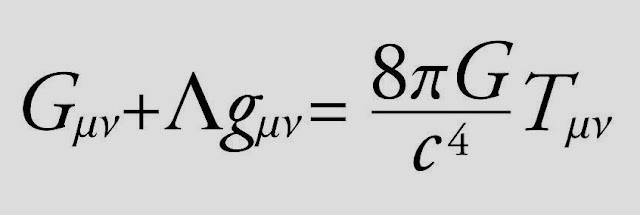





 Physics, astronomy and science history blog for students
Physics, astronomy and science history blog for students